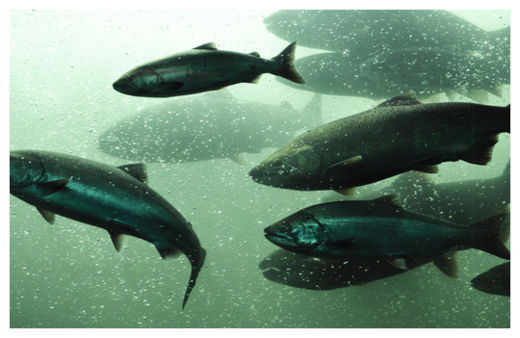
© Getty ImagesA school of Chinook salmon. New research shows the fish could vanish from many rivers by the end of the century.
A warming climate is likely to wipe out spring-run Chinook salmon in at least one California watershed by the century's end, found a new study.
No matter which climate projections the researchers used, warmer waters spelled major trouble for the fish in the coming decades if people do nothing to help the fish. And the findings are likely to apply to a variety of salmon species up and down the West Coast, especially in California where temperatures are closest to the tipping point.
"I saw the results almost a year ago, and I just sat at my desk and cried," said Lisa Thompson, a fisheries biologist at the University of California, Davis. "Fish weren't making it through to the end of the century in almost all cases."
"Things look grim," she added. "But there are things we can do."
For the last five years, Thompson and colleagues have been studying spring-run Chinook salmon in the Butte Creek watershed, in the Central Valley of California. These types of fish are particularly sensitive to climate change because adults spend their summers in freshwater streams before spawning in the fall. And compared to the Pacific Ocean, where the fish spend the rest of the year, streams are far quicker to warm up in hot conditions.
More than a million spring-run Chinook used to live in the waters of the Central Valley, Thompson said. Today there are fewer than 10,000 of them -- a decline of 99 percent.
